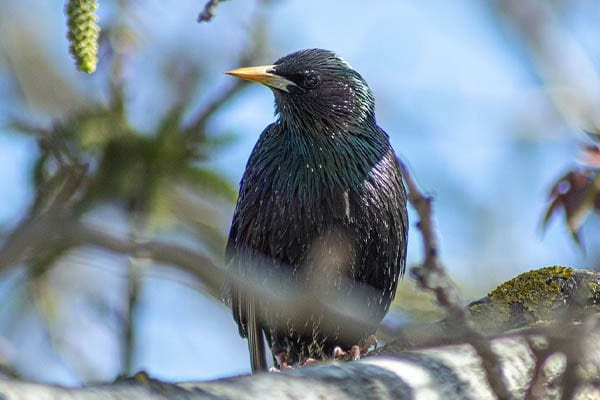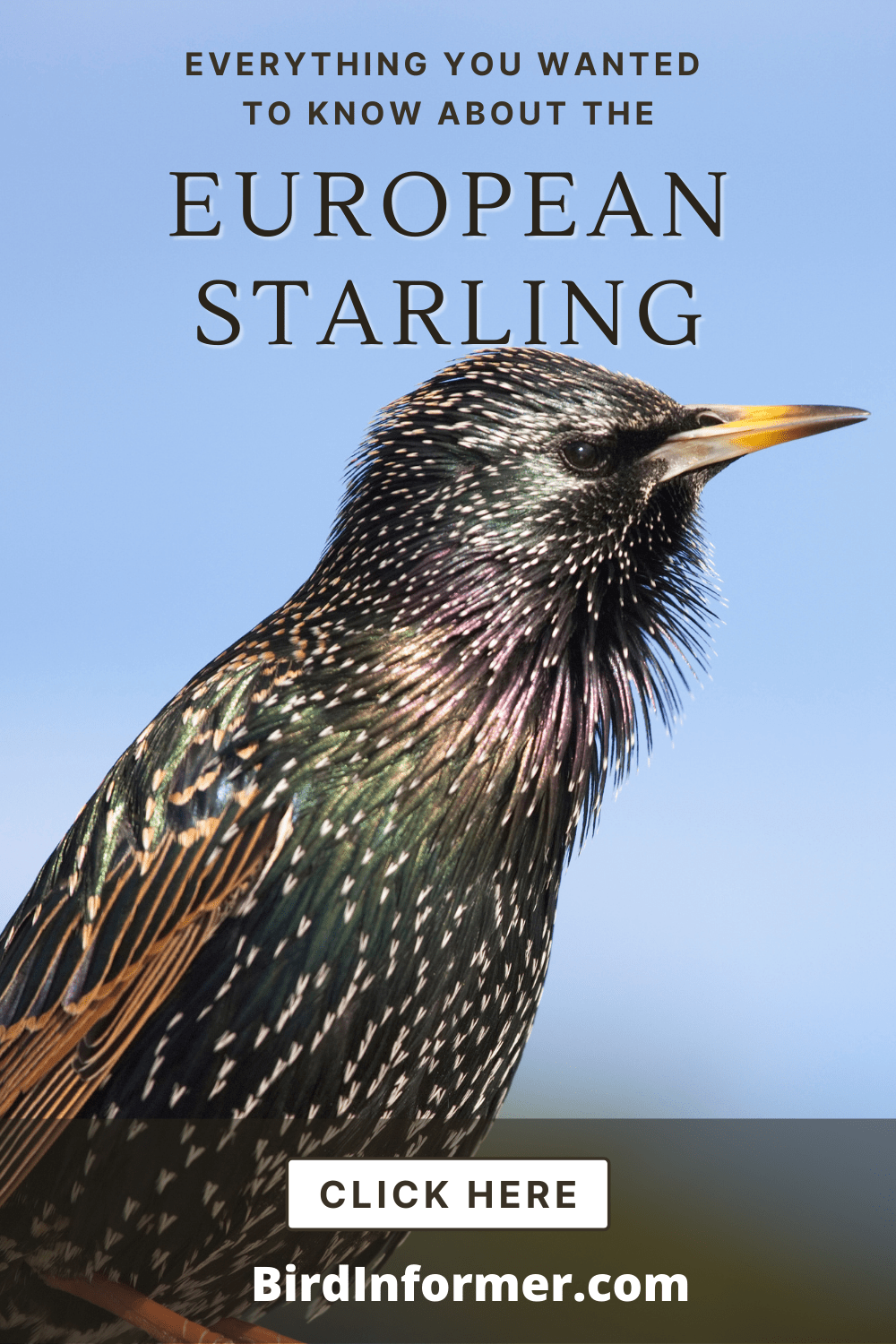Contents
- Common starling facts
- Common starling: how-to identify
- Common starling bird vocalization
- Where You’ll See Common Starlings
- Common starling diet
- Common starling nesting
- Common starling behavior
- How-to attract common starlings
- Common starling threats
- Common starling fun & interesting facts
- Common starling related species in this family
The European Starling is a beautiful bird, introduced to North America around the 1890s because of Shakespeare enthusiasts. They wear a glossy black color with some purple and green iridescence that shows when hit by sunlight. They are very aggressive, competing against native birds for nesting sites.
In this article, we are going to cover a wide variety of topics related to the European Starling, such as:
- How to identify them
- How, when, and where they migrate
- Their diet
- How and where they nest
- And much more…
So, without any more delay…
Let’s jump right into it and learn more about the European Starling.
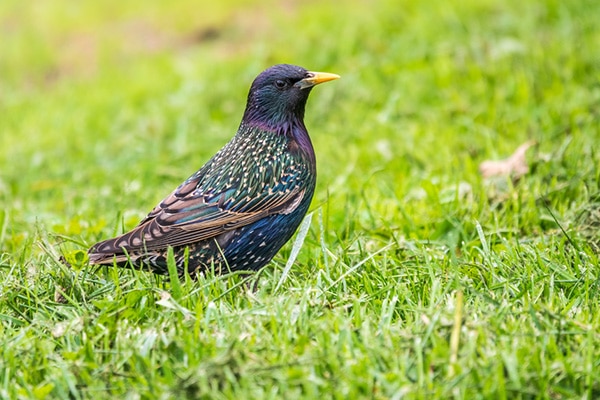
Common starling facts
- Common Name: European Starling
- Scientific Name: Sturnus vulgaris
- Scientific Family: Sturnidae
- Life Span: 15.3 years
- Size: 7.9 to 9.1 inches
- Wingspan: 12.2 to 15.8 inches
- Weight: 2.1 to 3.4 oz
- Conservation status: Least Concern (LC)
Common starling: how-to identify
European Starlings are medium-sized birds, nearly twice as large as the House Sparrow and smaller than an American Robin. They have chunky bodies, short tails, and long, pointed wings.
These are blackbirds that have glossy purple to green color patterns from their head down to their tail. Their bills are yellow and appear long and pointy.
Differences Between Male & Female
Male and female European Starlings look the same overall. Both feature a black color, especially if the sun doesn’t shine on them. However, when it’s sunny, you’ll notice a purple to green iridescence.
Another detail you’ll notice is that these birds appear to have several white dots on their whole body. However, their numbers differ as some birds may have more dots than others.
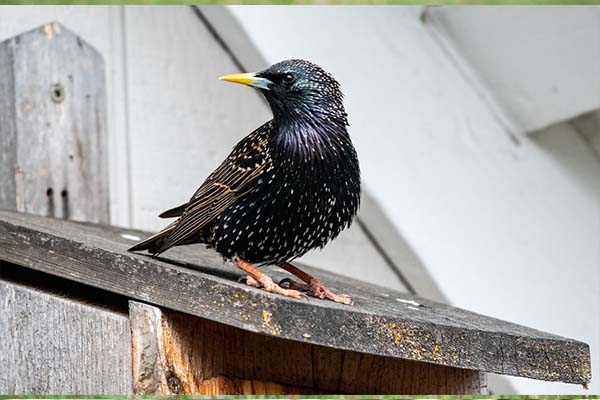
Differences In Summer Plumage vs Winter Plumage
European Starlings molt and may look different all-year-round.
During the breeding season, summer, you’ll see them as bright and attractive blackbirds. The birds would appear glossy, and when the sun hits them, you’ll notice a purplish to greenish hue, especially on the neck area. Some birds still have white dots during this season, while others don’t.
When winter comes, European Starlings lose their glossy black color. Instead, the birds would look brown overall, but the white dots appear clearer than during the summer. Bill color then changes to black.
Common starling bird vocalization
Where You’ll See Common Starlings
European Starlings are native to Europe and some parts of Asia and Africa. However, they were soon introduced in the United States around 1890, where only fifteen pairs survived upon release. Now, they are widespread across North America, from southern Canada to northern Mexico.
These birds are commonly found in lowlands or non-mountainous terrains. They also love to live around people like in cities, parks, farms, and fields. Basically, anywhere that is open, grassy, and disturbed, you’ll be able to find these birds.
Common starling bird migration
Southern populations of European Starlings are mainly resident birds. On the other hand, northern populations are short-distance migrants who move down south in winter or fall to the north of Mexico.
Common starling diet
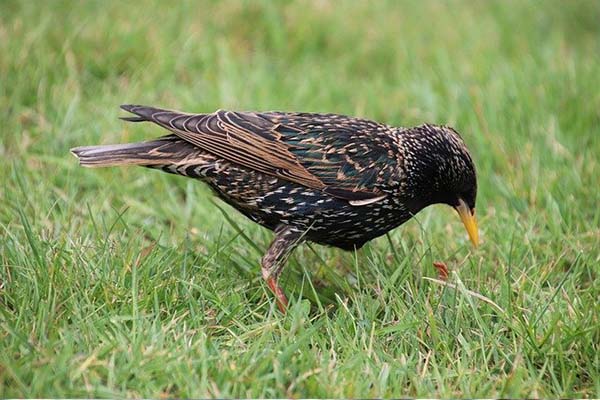
European Starlings are omnivores, which means they can eat both plant and animal materials. Diet would usually depend on the season, but if there are lots of insects, that’s what they would prefer.
They would search for insects, especially in summer, and would target grasshoppers, beetles, caterpillars, worms, snails, and spiders. In winter, when insects are fewer, they would eat berries or fruits like cherries, mulberries, blackberries, plums, and pears.
There are also times when they would also eat seeds, grains, nectar, and even garbage.
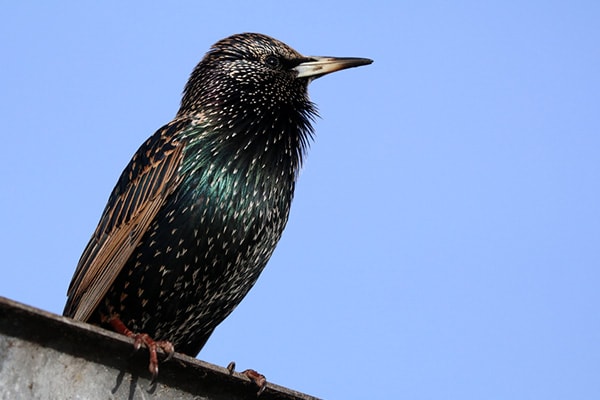
Common starling nesting
- Clutch Size: 3-6 eggs
- # of Broods: 1-2 broods
- Incubation Period: 12 days
- Nestling Period: 21-23 days
- Egg Description: Bluish or greenish white
The breeding season for European Starlings usually starts early in spring. Male European Starlings will establish a territory and choose a nest site first before they start attracting females.
Nest sites are usually in any cavity they’ll find, regardless is it’s natural or artificial. This includes tree cavities, old woodpecker holes, streetlights, nest boxes, or even caves and cliffs. Nest sites are also usually located 10-60 feet high up the ground.
Upon choosing a nest site, males will begin construction by filling the hole with twigs, grass, weeds, trash, cloth, and string, lined with softer materials. When the female birds arrive, the males will attract them by spreading their wings while perching next to the nesting site.
Once a pair forms, the female bird will check the nest and make some renovations, sometimes discarding some nest materials that are not needed. Once laying and incubation start, European Starlings are also found to add fresh plants to the nest.
Common starling behavior
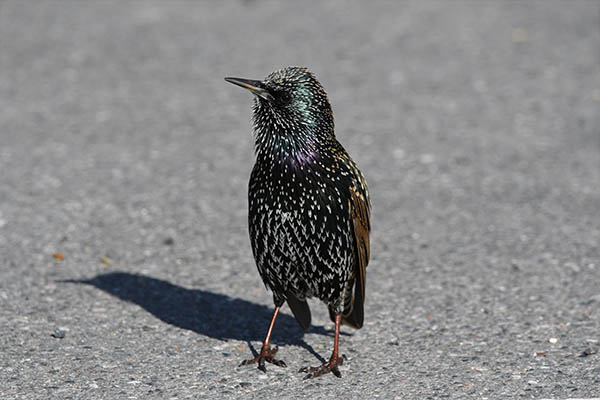
European Starlings search for food in open areas. These birds use “open-bill probing”, a technique where they poke the ground with their bill and force open the bill to search for insects. They also use the same method when opening hard seeds.
These birds would most of the time join other birds to search for food. However, they can be ve very aggressive and would dominate over other species. They would confront other birds, and things would sometimes end up with a fight.
Another way they showcase their aggressiveness is when they search for nest sites. There are many cases where European Starlings would evict native bird species in nest boxes to occupy them.
However, when it comes to their same species, European Starlings are very social. They would flock together, search for food together, breed in colonies, and would migrate in a massive flock.
How-to attract common starlings
European Starlings may not be native North American birds, but they are very familiar with bird feeders as they love staying near humans.
Most people, especially farmers, consider European Starlings a nuisance. Not everyone also wants to attract them because they tend to over-compete with native species when it comes to nest sites. But if you want to see European Starlings because of their beautiful looks, you’ll be happy to know that it’s very easy.
Like most birds, you just need to give what these birds want – food, water, and shelter.
You can hang a tubular feeder filled with cracked corn and peanuts to attract these birds. You can then plant some fruit-bearing or seed-bearing trees and shrubs for more food options. And since these birds love insects the most, you might want to make your yard insect-friendly.
For water, place a birdbath that the birds can use. You can then place some nest boxes to provide a nesting site. But most importantly, make sure your backyard looks open to encourage the birds to come.
Common starling threats
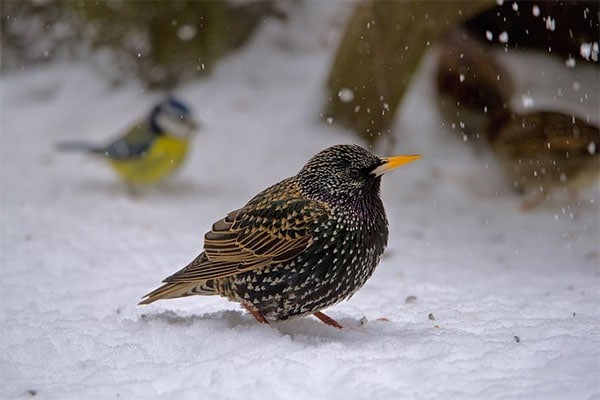
European Starlings are still common and widespread across North America, even though there has been a large decrease in their numbers. The biggest threat still found are predators, which include falcons and cats. However, since these birds are usually together forming flocks, they get to protect each other.
Common starling fun & interesting facts
- European Starlings were first introduced in Central Park, New York, around the 1890s.
- They are one of the birds introduced by a group who want all birds mentioned by Shakespeare to be brought to America.
- They are great at mimicking vocalizations and can copy up to 20 different bird calls.
- They are strong fliers and can speed up to 48 mph.
- They have strong jaws that allow them to poke into the soil and grab insects, even if it’s winter.
- The oldest recorded European Starling in North America lived for 15 years and three months.
- Brahminy Starling
- Cape Starling
- Burchell’s Starling
- Superb Starling
- Splendid Starling
- Red-winged Starling
- Pale-winged Starling
- Violet-backed Starling
- Asian Pied Starling
- Black-winged Starling
- Bail Myna
- Common Myna
- Great Myna
- Fiery-browed Myna
- Sulawesi Myna
- White-necked Myna
- Stripe-sided Rhabdornis
- Long-billed Rhabdornis

